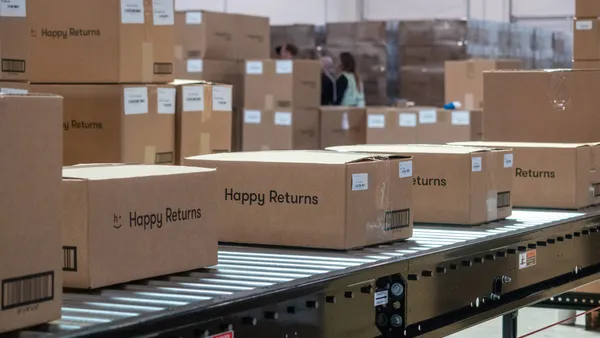Dive Brief:
- A drone successfully delivered a Popsicle to a two-year-old boy in Virginia, in the first test of drone deliveries out of the line of sight of the operator, reported Bloomberg.
- Wing, a subsidiary of Alphabet, performed the smartphone app-directed delivery, carrying the frozen treat from a simulated store a mile away.
- The delivery was one of 10 Federal Aviation Administration (FAA) pilot programs to test the effectiveness and safety of drones in populated areas and aid the U.S. Department of Transportation in creating regulations.
Dive Insight:
The FAA requirement that drone operators be able to see drones at all times during their flight, deemed the "line of sight" rule, has been one of the most significant roadblocks to widespread drone adoption across industries.
Though drones are already in use inside warehouses, concerns far beyond safe piloting remain. A drone was used in an assassination attempt in Venezuela last week, and concerns that they will be used by terrorists eventually, persist. Privacy as well is top of mind, since drones use computer vision — which is video-based — to land without hitting anything.
But these issues carry less weight if the drones can't fly beyond the operator's field of vision. The FAA debuted a process by which companies can apply for a "line of sight" waiver earlier this year, but 99% of applications are declined, according to PrecisionHawk, a drone software company and very early partner of the FAA on drone matters. According to a blog post by the company, waiver applicants have trouble objectively proving that their drones can operate safely. The 10 pilots across the country are intended to give the FAA more data to find out which of the possible dangers and disruptions potentially caused by drones are likely to actualize.
Apart from simple safe flight, the Popsicle delivery, sponsored by Virginia Tech Mid-Atlantic Aviation Partnership, was also testing remote identification technology so that authorities can track drone flights.
Another aim of the test was to gauge neighborhood sentiment. After knocking on 30 to 40 doors, organizers found zero objections.













